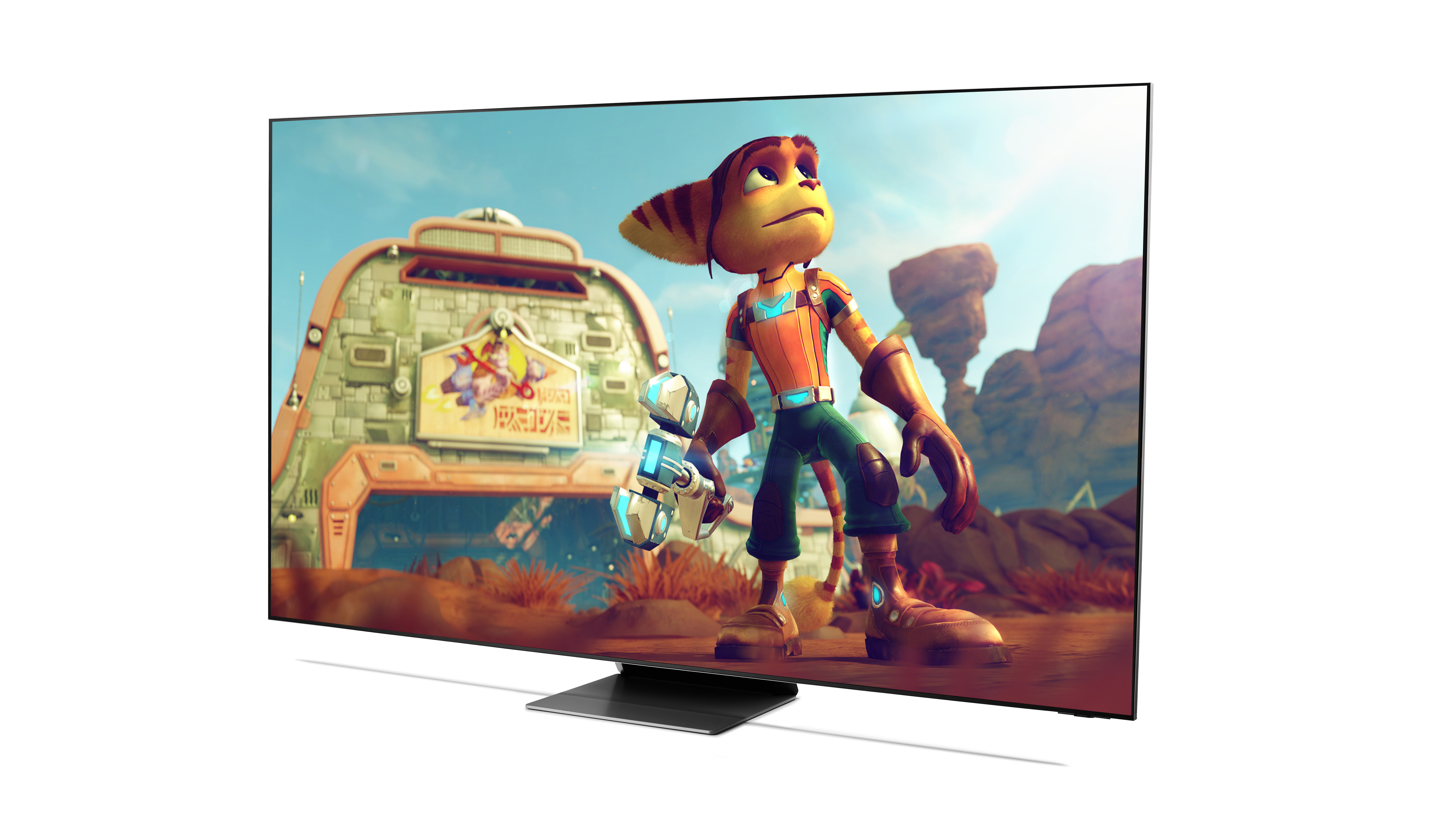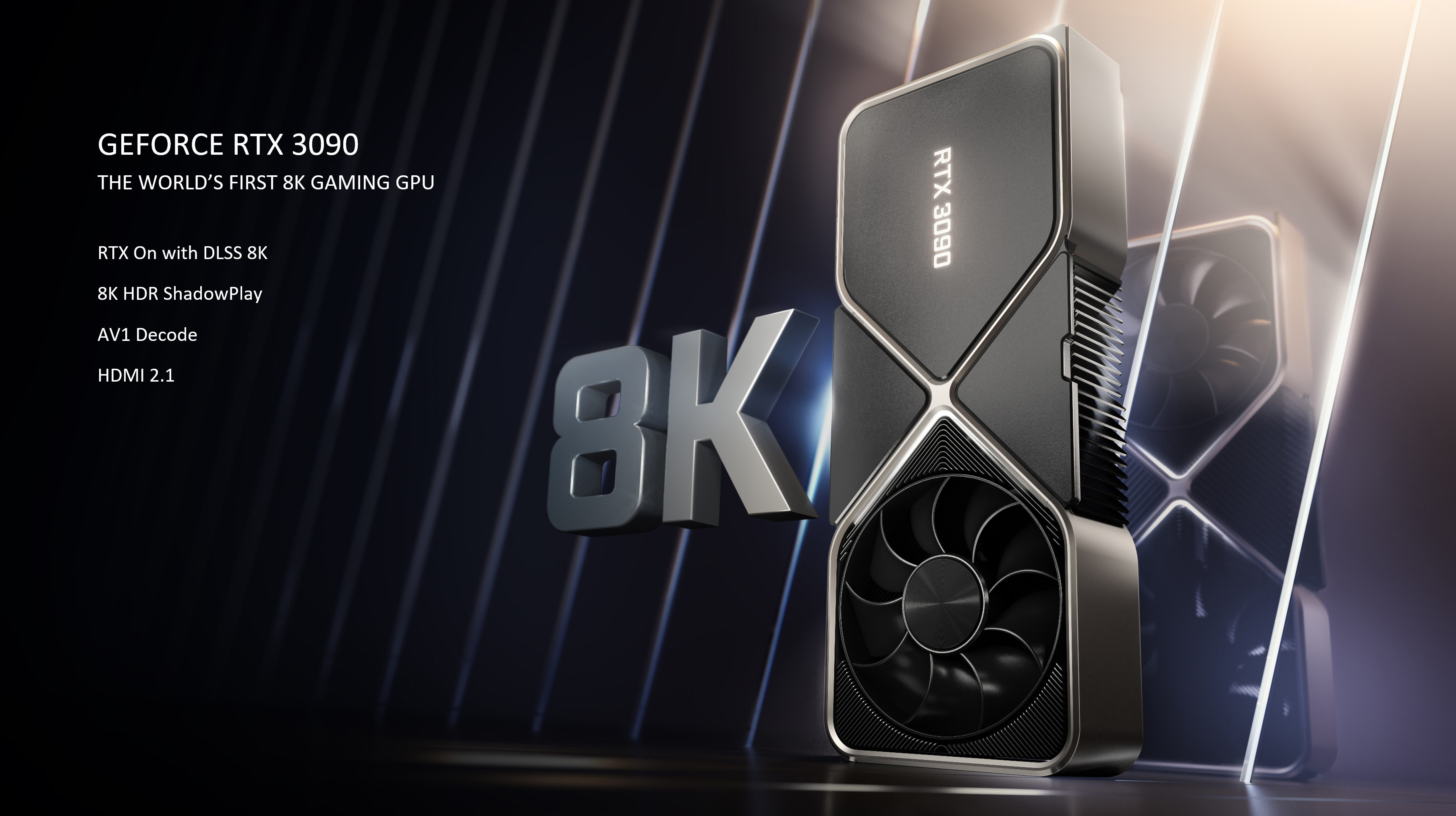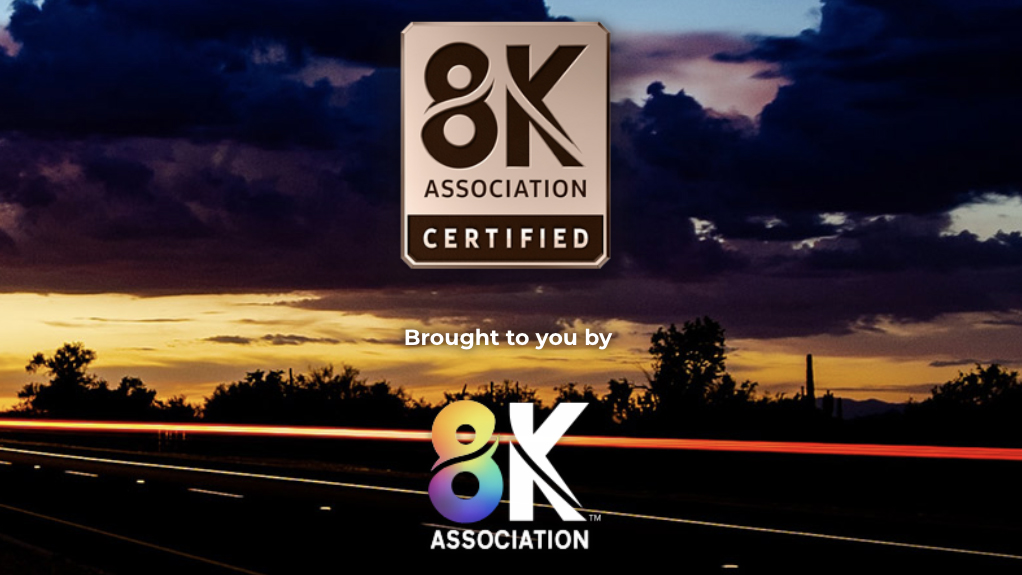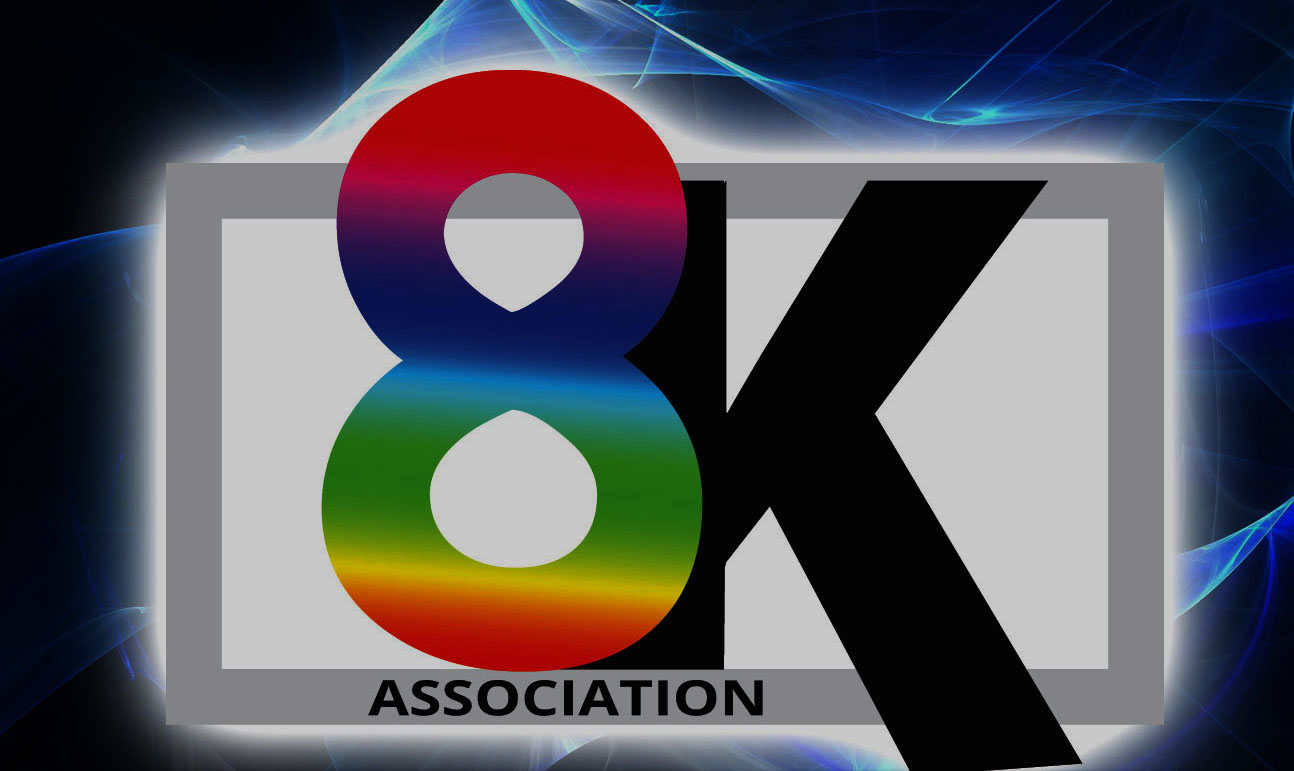8K streaming isn’t coming anytime soon, and that’s a good thing
Don't get your hopes up for 8K streaming just yet

8K. The final frontier and more ‘K’ than even 4K – sounds good, right? Inevitable, even, considering the only direction that technological evolution is heading in. Well, here’s the thing about 8K: it’s not as exciting and inevitable as you might think, perhaps most especially when it comes to streaming. Sorry, AV fans.
Sure, if you’re one of the few who’ve managed to pick up an 8K display and you’ve got a high-capacity SSD worth of storage kicking around or enough bandwidth to spare, well, have at it. Go out there and find some 8K footage, if you can. But if you’re just an average chap waiting on 8K TVs to get cheaper and, more importantly, streaming to support the resolution, I’ve got some bad news.
8K streaming isn’t coming anytime soon in any meaningful capacity, and what’s more is that this is actually good news. The costs are high, the benefits are slight, and so few people could even take proper advantage of 8K streaming that it just doesn’t make a lot of sense, now or in the near future. So, sit back, strap in, and let me tell you all about why 8K streaming isn’t coming.
The high cost of 8K

In terms of 4K video, an hour of footage can come with a huge range of file sizes, depending on what you’re shooting with and the codec at hand. So, let’s just think about 4K Blu-rays, which cap out at 100GBs for a single disc. Imagine that as our baseline for the size of an average 4K movie, though that number definitely can change.
When it comes to streaming services, as you might already know, a 4K stream is not going to compare with a 4K Blu-ray in terms of video quality because of bandwidth limitations. Most streaming services aren’t sending 100GBs worth of data to you when you’re watching a 4K movie: a 4K Blu-ray disc can run up to around 128Mbps while streaming services tend to cap out at around 17Mbps. Of course, that 17Mbps number will drop even lower depending on your internet connection, too. Suffice it to say with 4K streaming, the biggest limiting factor is going to be bandwidth because of just how much data goes into 4K footage.
With 8K, file sizes and bandwidth requirements get much, much steeper. Again, file size is variable, but an hour of raw 8K footage from an 8K RED camera is going to take up a massive 7TBs or so, and that’s just for one hour! Of course, video compression technologies and codecs will bring that number down, but even still, so much as storing an 8K movie on your average solid state is going to be problematic for most people, forget about the bandwidth that would be necessary to actually stream in 8K at a good quality level.
In fact, streaming services are still struggling to handle 4K video. For example, YouTube recently trialled a system where only paid subscribers could access 4K footage. Why’s that? Well, YouTube isn’t saying, but the speculation is that 4K video is still a niche resolution that relatively few people on YouTube actually use but takes up a huge amount of YouTube’s server capacity. And once again, that’s 'just' 4K.
Get the What Hi-Fi? Newsletter
The latest hi-fi, home cinema and tech news, reviews, buying advice and deals, direct to your inbox.
The 8K situation gets even more complicated when it comes to internet speeds. If you live in a major city in the US, you may well have access to fiber internet with speeds of up to 1000Mbps, but on the other hand, you may not be able to afford it because Americans pay high prices, on average, for fast internet. And if you aren’t fortunate enough to live in a major city, you may only have access to 50Mbps at best or even less if you’re in a remote area.
These numbers are, indeed, as variable as the geography of the US itself is, but suffice it to say that every American can’t stream in 4K right now, let alone 8K. And that’s just in America; much of the world is worse off than the USA. Plus, depending on how many devices/people are using your connection simultaneously, even a 50Mbps connection might not be enough to stream 4K video without buffering and stuttering.
But file size and bandwidth aren’t the only reasons why 8K streaming doesn’t make sense.
Who’s got an 8K display, anyways?

Once again, let’s look at 4K. The data on this is a bit variable depending on what stats you look at, but generally, less than half of households in the US have a 4K TV in 2022. 1080p (or 'Full HD') is still extremely common. Okay, sure, but where does 8K stack up? 10 per cent? 20 per cent? It’s pretty popular by now, right?
Nope. In general, once again, 8K TVs likely account for less than 1 per cent of the TV market. That’s a fraction of a fraction. In all likelihood, there are far more people using 720p HD TVs than there are using 8K TVs today. Yes, the numbers here do vary, but the larger point is that almost nobody outside of a tiny per cent of AV-obsessives even has an 8K display.
And when you think about it, it makes sense. 8K TVs are expensive, gaming consoles don’t really support the resolution (and PC hardware is still not nearly powerful enough to run new games at 8K at high graphics settings and framerates), and what’s more is that there just isn’t much 8K content out there, down to all the reasons above, and more we'll get to in a moment.
If you’re a streaming service that can only support 4K streams at a relatively low quality compared to a Blu-ray, why would you push for 8K? Almost none of your customers could actually use it, and your servers are almost certain to struggle under the massive data requirements of storing 8K video. Plus, if you really wanted to make some more money pushing higher-quality content, you could start charging for a 4K+ streaming option that upped the quality of 4K video.
Whether we’re talking about storage, internet speeds, or whether folks even have 8K displays, the numbers just don’t add up. But even so, some will wonder if they’re missing out on an upgraded, truly hi-fi AV experience without 8K streaming. However, you may not need to wonder.
Does missing out on 8K streaming mean missing out on image quality?

The short answer here is yes, but the longer answer is probably not. Here’s why.
So, 8 is double 4, but 8K is not twice 4K. The resolution of 4K is 3840 x 2160, while 8K is 7860 x 4320, and it’s important to remember that the overall number of pixels in a particular resolution are those two numbers multiplied together. If you do the math, 4K has 8,294,400 pixels while 8K has 33,955,200 pixels, so the difference is around four times, not two times, the pixels. All of this is to say that 8K is an astonishingly hi-res format that has 16 times the pixels of traditional 1080p.
When you start exponentially increasing how many pixels you’re working with, display size quickly becomes an important factor. With 1080p, for example, you don’t need a large screen to really get the most out of the detail on offer because of the number of pixels in 1080p content, but that changes with 4K. With 4K, you’re not really getting as much out of the experience as you could with a smaller 20- to 30-inch display vs a larger 50-inch display because of how many more pixels go into 4K. As you might expect, 8K continues this trend.
If you really want to leverage the full might and power of 8K as a resolution, you’re going to need a 60-, 70-, or 80-inch TV to get that job done, and the smaller the 8K TV you have, the more 8K is not going to look noticeably sharper and more detailed than 4K. Naturally, of course, higher resolutions do largely mean better image quality, but in the real world, diminishing returns in terms of display size and pixel density is a very real thing you have to contend with.
Then, if we’re talking about streaming, 8K streams will inevitably have to massively cut down on the quality of raw 8K footage to make it even possible at all to stream such content. And when you do that, you may well get better video quality out of a 4K Blu-ray on a smaller display than you would when streaming 8K content on a larger display.
However, yes, if you’ve got a large 8K TV and full-fat 8K footage, you will likely be enjoying better image quality than if you were to watch that content from a 4K Blu-ray on your same setup. And if streaming services could stream high-quality 8K footage directly to you and your internet connection could handle that, well, you might even be able to beat a 4K Blu-ray there too.
But there’s another element at play here when it comes to 8K we haven’t discussed yet, and that’s availability. Does 8K content even exist for streaming sites to offer or studios to try to sell to you? The answer might surprise you…
Where is all the 8K content? Is there any out there?
If you search for 8K content online, you’ll discover pretty quickly that there isn’t much. It definitely exists, and you can absolutely find some, but it’s nowhere near the level of even 4K content availability when 4K is itself still a fairly niche resolution compared to 1080p.
If you do some internet sleuthing, you will find out that 8K cameras exist, no doubt about it, and you can even find movies that were reportedly shot in 8K or content creators that shoot in 8K, but you’ll generally be hard-pressed to find that 8K content to watch yourself at home on your own kit.
The fact of the matter is that however many people are shooting in 8K out there, nowhere near enough are creating 8K content for it to become a mainstream option like 4K anytime soon. And that even takes into account the possibility of movies shot on film being able to be translated over into good, high-quality 8K versions, which is likely not too many.
Right now, the biggest use case for 8K is futureproofing and better content production on the backend, as opposed to 8K versions of movies, shows and content you love. This does mean that in 5, 10, 20 years we may, indeed, have a reliable storehouse of 8K content out there, but it also means that if you’re buying an 8K TV now or in the next couple of years, well, what you can actually watch in 8K is going to be quite limited.
MORE:
The best 8K TVs and best 4K TVs you can buy
The Apple TV might soon be able to play 8K video
My iPhone 13's screen is so good, it's ruining my viewing habits – here's how
If you're buying a gaming TV, you might want to wait until 2023
Ruben is a long-time freelance consumer technology and gaming journalist, and was previously a Staff Writer at What Hi-Fi?. Since 2014, Ruben has written news, reviews, features, guides, and everything in-between at a huge variety of outlets that include Lifewire, PCGamesN, GamesRadar+, TheGamer, Twinfinite, and many more. Ruben's a dedicated gamer, tech nerd, and the kind of person who misses physical media. In his spare time, you can find Ruben cooking something delicious or, more likely, lying in bed consuming content.
-
RichSM Really great points there. A lot of streaming services like Netflix compress 4K so much that even a 1080p Bluray will generally look better, so I wouldn't have high hopes for 8K. Besides, you'd need a fibre connection to really be able to stream that in any sort of decent quality and although fibre is getting more widespread in the UK it's not yet common.Reply
There's also the limitations of the human eye to consider. At some point, you simply can't go any higher unless you're using a magnifying glass to watch your TV. We'll probably reach that point in a couple of decades or so. And then you need to focus on quality rather than resolution. -
CLL Stupid click bait article. This article offers no real reason why no 8k streaming is good other than it costs more. Wow, that is so bold and deep! Thank goodness there are no steaming options! It would be truly terrible to have a choice on higher quality viewing! I live in a town in plain old Kansas with a little over 20k people and pay $89 a month for gigabit speed. I don’t mean to sound mean, but I’ve thought that this website was of reasonably good in the past, but I would like the time that I wasted on this click bait article.Reply

